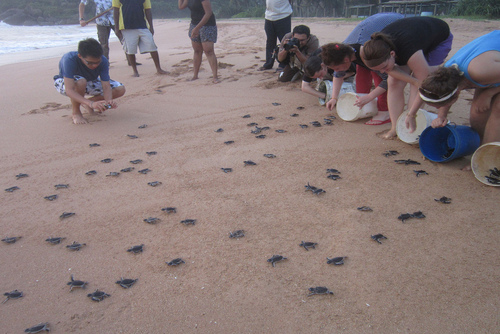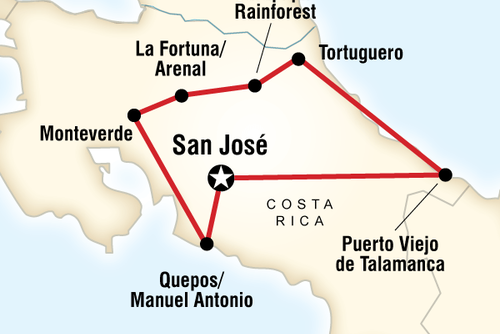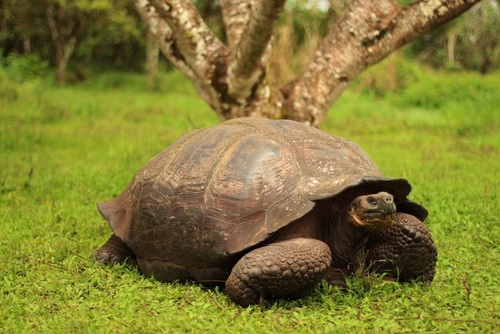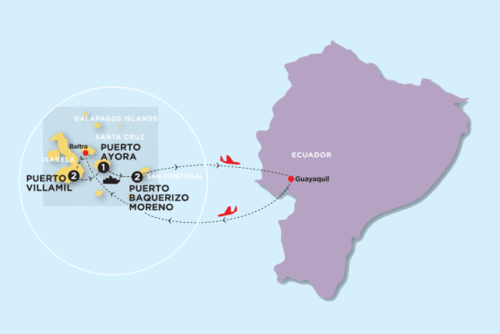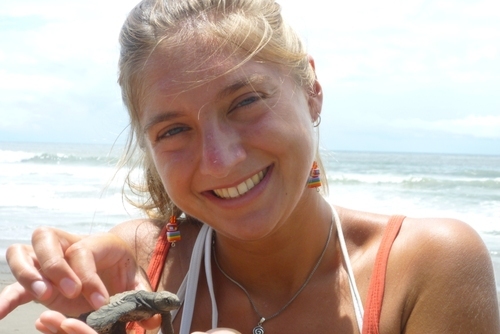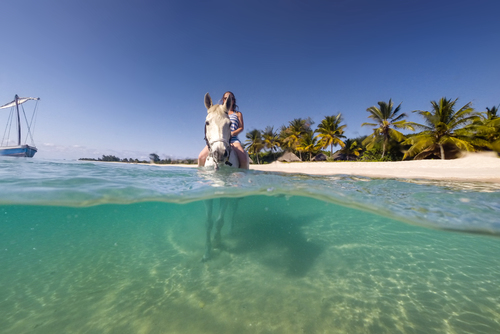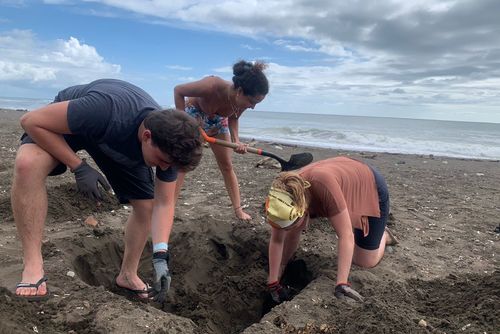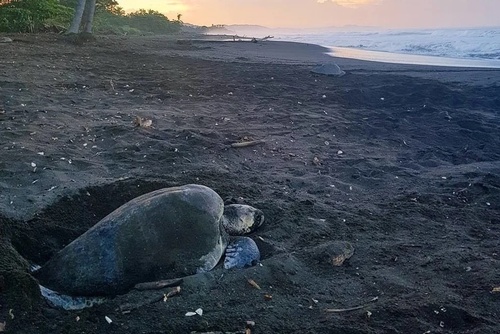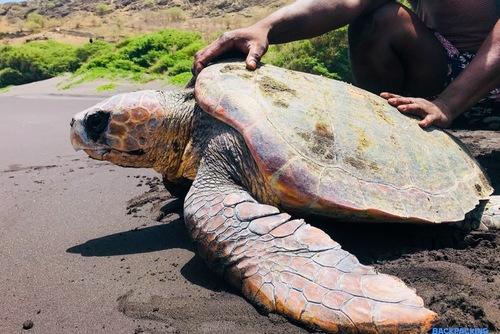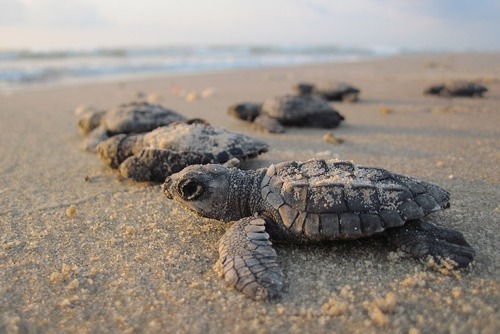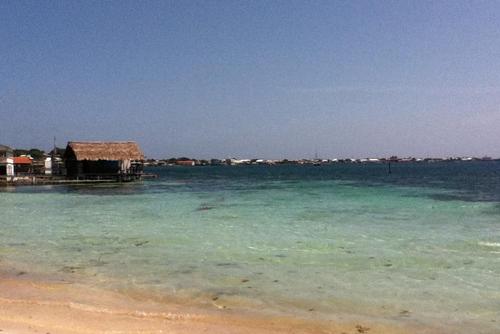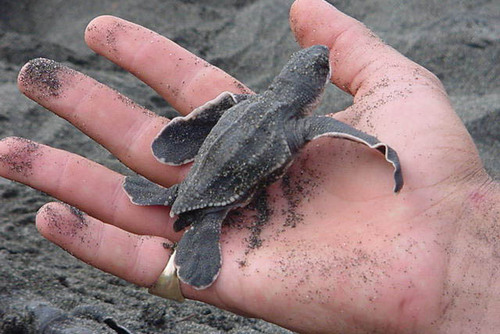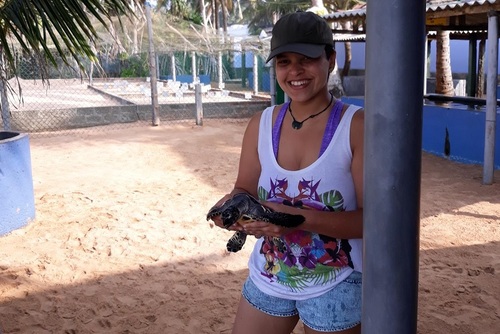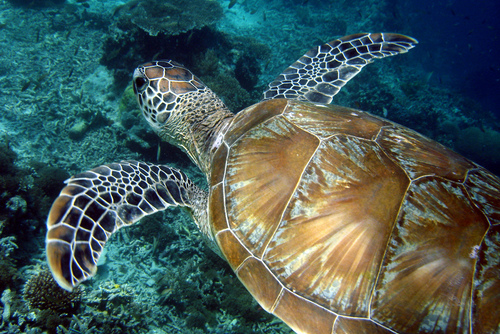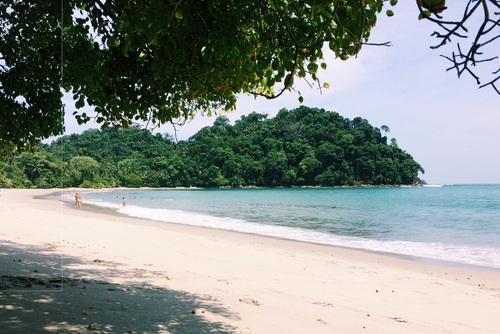There is though lots of inpiration work being done to help protect them and their breading grounds. If you would like to learn more view this insightful feedback from LAST (Latin American Sea Turtles) Association (formerly WIDECAST-Costa Rica) which includes the ups and downs of working during the previous nesting season.
This year we recorded a high season for leatherbacks, with 388 nests recorded. Despite our efforts, we lost 63% of these nests to poachers.
Good news is that all the nests that were relocated in the new hatchery hatched very well and we released more than 4,000 baby leatherbacks in the ocean! 23 green and 3 hawksbill sea turtle nests were protected in our hatchery and over 2000 babies of these species were successfully released!
We also identified 223 female leatherbacks and 17 greens thanks to metal tags. Beach cleaning in the area has resulted in removing over 8000 litres of trash!
At Pacuare Nesting beach there was a hectic start to the season. In mid-February, the scientific staff of WIDECAST – LAST set foot on Pacuare beach and started the preparation of the nesting season.
A lot had to be done to get ready and fully operational; During the first week, the local staff from the Asociación para la protección del ambiante del Nuevo Pacuare, professionals from Playa Banca and Panama received a week of training led by Luis Fonseca and Magali Marion in order to gain knowledge about sea turtles and get familiar with the beach protocols.
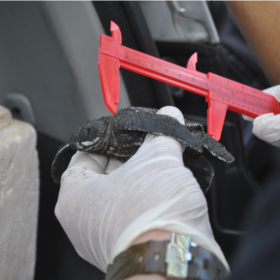
On the 28th of February, the first Leatherback nest was collected and safely relocated on the beach while the hatchery was under construction. The latest is one of the most important of our project giving the large numbers of poachers present on the 7 kms monitored by LAST.
After 2 months of shoveling, sieving and hammering, the hatchery was finished and had already 50 Leatherback nests relocated in it by the 10th of April, the season was extremely promising and everybody was looking forward the peak season.
Unfortunately, the elements were against us and, due to a combination of high tides and strong waves produced by El Niño, the hatchery was washed away within a week.
Everybody on our team who was volunteering in Costa Rica worked relentlessly together to save the precious eggs from the erosion, but there were no beach left to relocate them! As a last resort, the decision was made to transplant into Styrofoam boxes. A method that has only been used in experiments and had shown interesting results.
Once all the nests from the hatchery were safe, the building of a new hatchery located 50 meters away from LAST’s station started, in order to receive the eggs that were collected every night during the patrols. Our efforts were finally rewarded in May when the first nests started to hatch and little baby turtles were making their way to the sea.
The encouraging results of the season was celebrated by all the volunteers from LAST, La Tortuga Feliz and the local guides from la Asociación para el Ambiente de Nuevo Pacuare, that worked so hard under the sun, rain and always with the smile.
We are eager to start next season which will be full of new challenges, turtles and enriching experiences, so what don´t you come and live this once in a lifetime experience volunteering abroad with us!
A word from our RA´s..
The beach was suffering from unusually bad erosion when we first arrived in February, I cannot describe the devastation that we felt when the hatchery was slowly destroyed by the ocean crashing in.
It was so hard to believe that the sand, that we labored so long to clean, was being eaten away by each wave. More importantly, the eggs which were the purpose, end, and means of the conservation effort were on the verge of washing out to sea.
We spent all hours through the night carefully removing each nest, one egg at a time, and moving them to a safer place. It was extremely challenging work physically, mentally, and especially emotionally. This is the reality of joining volunteer programs with animals.
By the end of the worst of it, I was struggling to see how our handling the eggs at all was actually improving the chances for the sea turtles. I can now say that I have a rewarding feeling from my experience in Pacuare knowing that there are, in fact, hatchlings that emerged from our nests.
At the moments when the turtles needed us the most, there was not a person who didn't lend a hand. Magali (on site biologist) , Lauren, and Sophie (RA´s) were incredible in the lengths they went to in order to preserve those nests.
Our volunteers were amazing and without the help and cooperation from everyone it would have been impossible to do what we needed to in those long nights.
By Anna Butler: RA Pacuare Volunteer with Latin American Sea Turtles (LAST)
If you would like to volunteer with turtles there are projects all around the world which accept international participants. Browse opportunities by destination:

